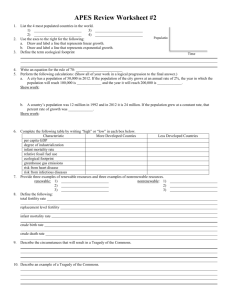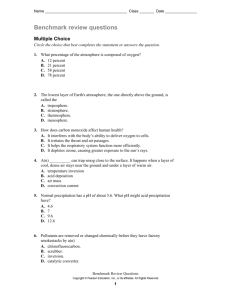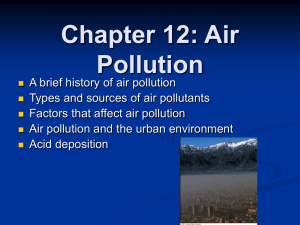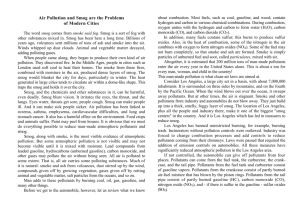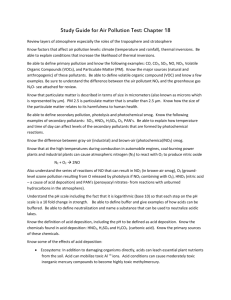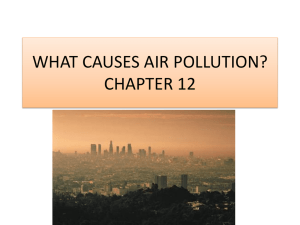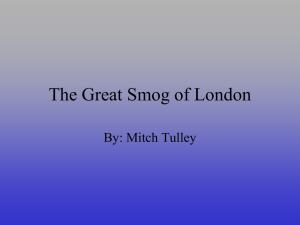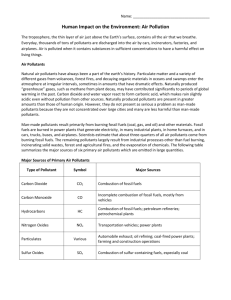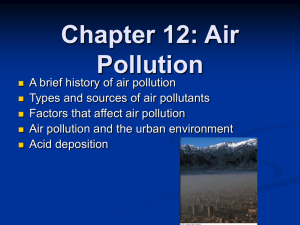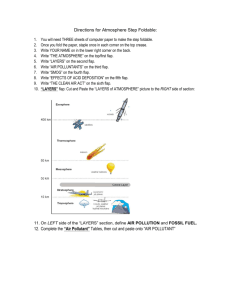environmental chemistry HL smog
advertisement
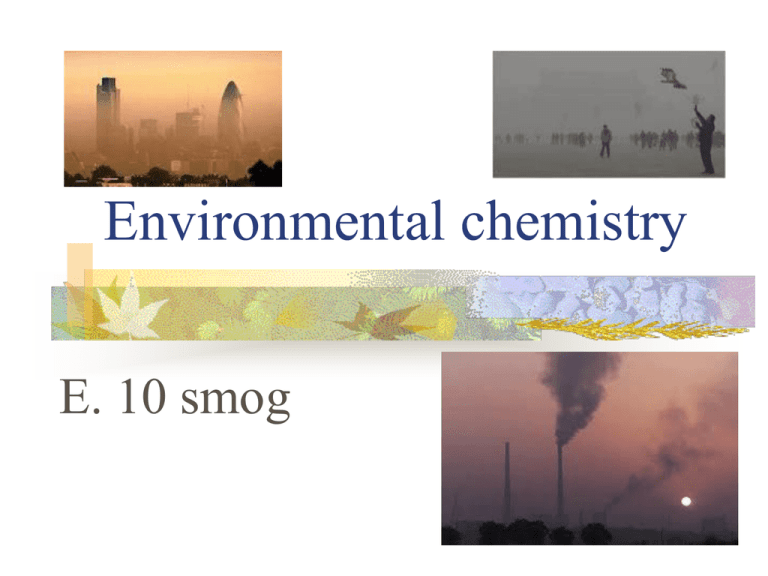
Environmental chemistry E. 10 smog smog State the source of primary pollutants and the conditions necessary for the formation of photochemical smog. Outline the formation of secondary pollutants in photochemical smog. smog a chemical ‘soup’ many different chemicals primary pollutants secondary pollutants that have been formed from the primary pollutants by free radical reactions brought about by UV from the Sun. photochemical smog: conditions (1) sunshine: windless day, hot, dry thermal inversion (cold air below warm sunlight converts primary pollutants into secondary pollutants; visible sunlight is enough to break bonds in NO2 as there is delocalisation which weakens a bond; air so the air cannot rise) photochemical smog: conditions (2) relief: city in a valley surrounded by hills primary air pollutants: nitrogen oxides and volatile hydrocarbons – VOCs source: internal combustion engines time: morning ‘rush hour formation of secondary pollutants NO + NO2 + O + H2O + ½ O2 NO2 hv NO + O O2 O3 O3 O2 + 2OH OH + NO2 HNO3 RCH2 + OH H2O + RCH RCH + O2 RCHOO RC(O)OO + NO2 RC(O)OONO2 (PAN) smog primary pollutants volatile hydrocarbons VOC nitrogen oxides secondary pollutants ketones, aldehydes, PANs, peroxides, ozone, photochemical smog (http://www.eco.pref.mie.jp/english/data-syu/data-sokuhou/img/R06-01_e.gif) smog: variation in day thermal inversion Normally, in the troposphere, temperature decreases as you go up; this makes warm and less dense air rise taking pollutants with it. The warmer air is replaced by cooler air which is again warmed up continuing the process; Thermal inversion occurs when cooler air slips underneath warmer air so that a layer of warm air is trapped between 2 layers of cool air. The bottom cool layer of air, which is denser than the warm layer of air above it, remains close to the surface. Any pollutants released in that layer of cooler air stay close to the Earth’s surface; this allows the primary pollutants to react and produce secondary pollutants and smog. smog: effects PAN’s cause eyes to water and respiratory problems, also catalyses formation of sulphuric acid, ozone in the troposphere is: an eye irritant and also irritates respiratory system causes deterioration of rubber as it breaks –C=C- and bleaches dyes affects leaves and therefore growth/damages crops reduced visibility secondary pollutants are toxic to plants corrosion of building materials by acids and ozone.
